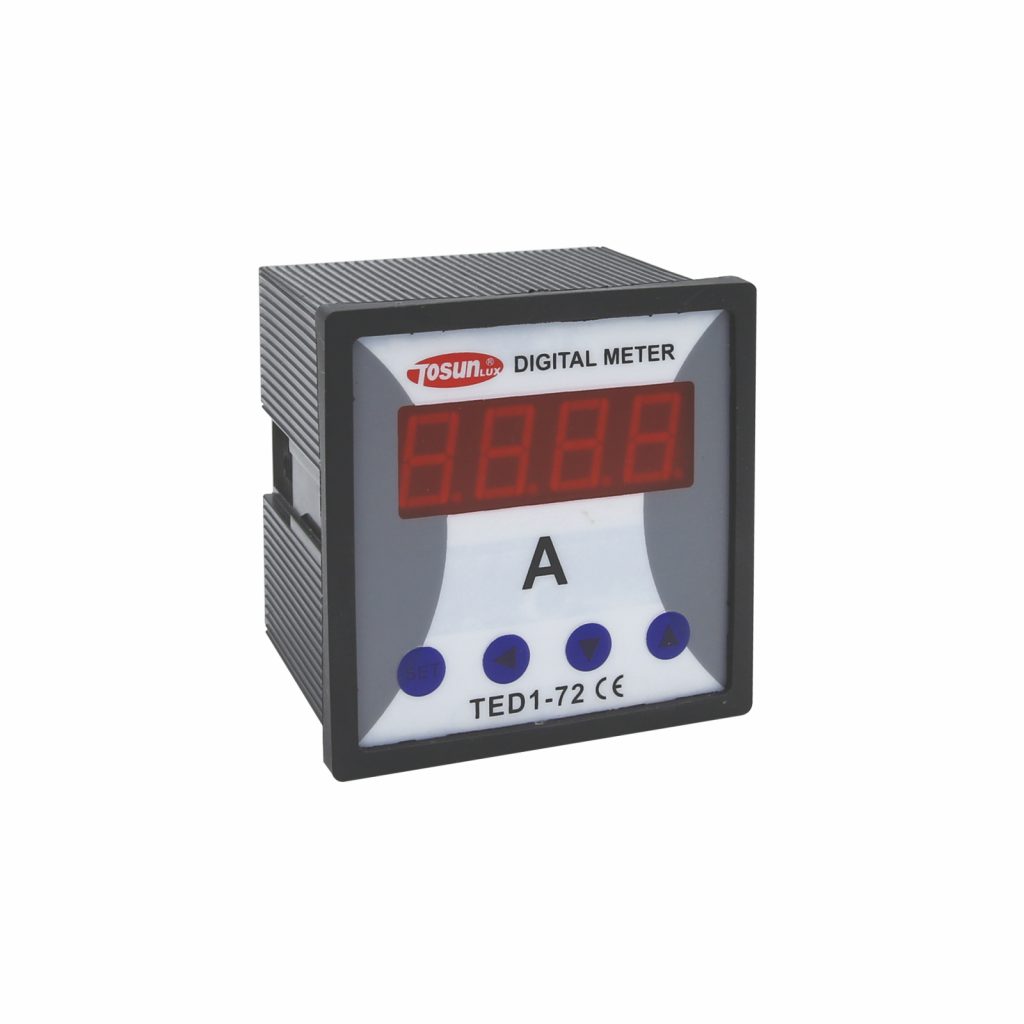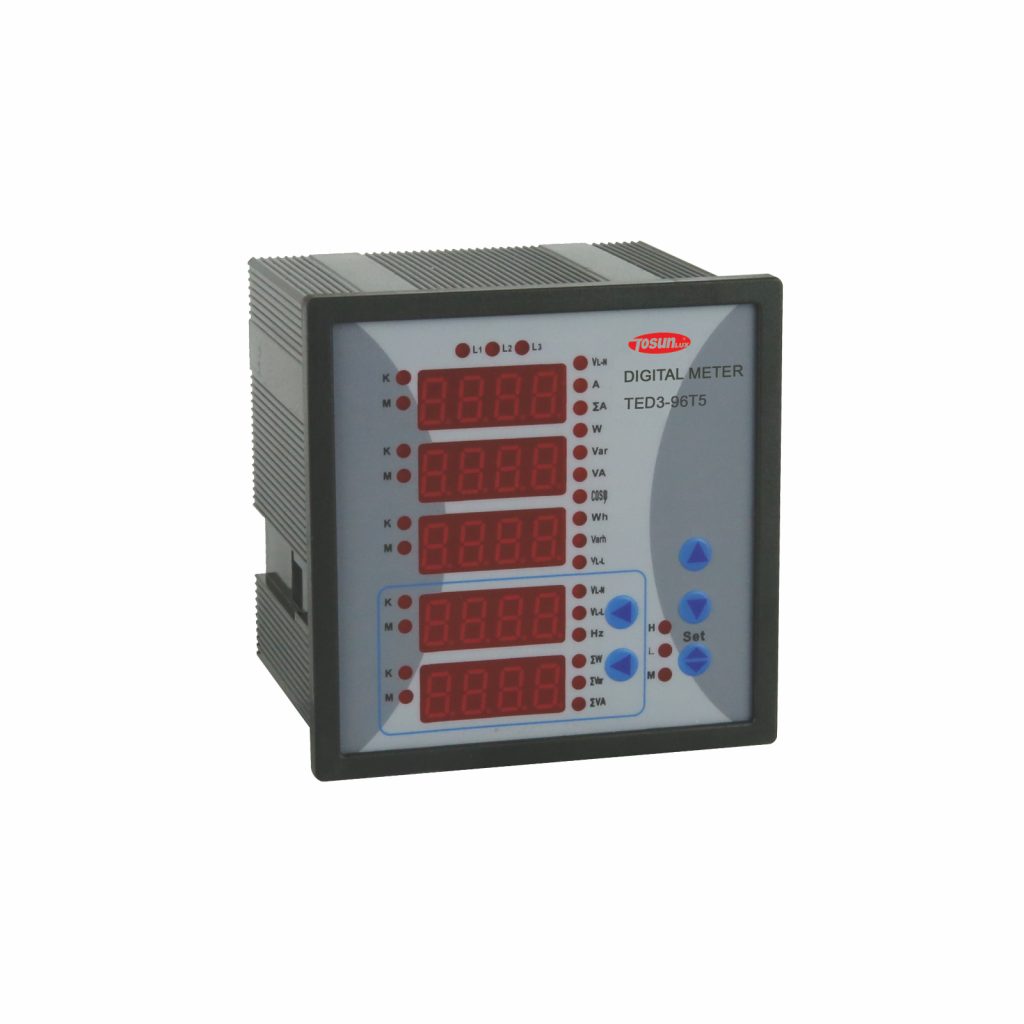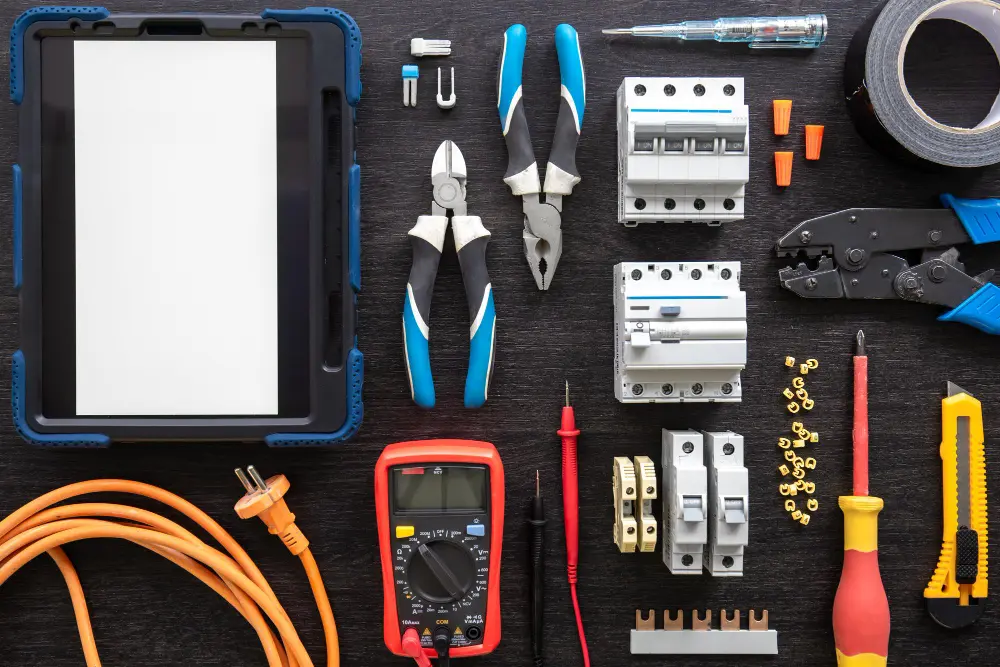How Does Digital Panel Meter Work?
Table of Contents
ToggleLet’s talk about digital panel meters, that little thing that plays a big role in monitoring electrical systems.
What’s a digital panel meter? Digital panel meters are tools that measure and display various electrical parameters in a wide range of applications. They are versatile devices that provide accurate, real-time information which makes them indispensable in monitoring and controlling electrical systems.
Digital Panel Meter: Working Principle
How does a digital panel meter work? A digital panel meter works by converting analog electrical signals into digital values, which are then displayed on a screen for easy reading.
It consists of several key components that make it work the way it does: input signal conditioning. analog-to-digital converter (ADC), microprocessor, and display which presents the measured value in a clear and readable format. The display can be an LCD, LED, or OLED screen, depending on the specific model.
Measuring Techniques
Digital panel meters use various measuring techniques to accurately capture different electrical parameters:
Voltage Measurement
Voltage is measured by comparing the potential difference between two points in an electrical circuit. Digital panel meters use high-impedance input circuits to minimize loading effects and ensure accurate voltage readings.
Current Measurement
Current is typically measured using shunt resistors or current transformers (CTs). The voltage drop across the shunt resistor or the secondary winding of the CT is proportional to the current flowing through the circuit. The digital panel meter measures this voltage drop and calculates the corresponding current value.
Power Measurement
Digital panel meters can measure both active and reactive power in single-phase and three-phase systems. The meter multiplies the instantaneous voltage and current samples to calculate power. Advanced meters can also calculate energy consumption by integrating power over time.
Frequency Measurement
digital panel meter working principlecan measure the frequency of AC signals by detecting the number of cycles within a specific time interval. This is particularly useful for monitoring the stability of power systems and detecting any deviations from the nominal frequency.
FAQ about Digital Panel Meter
What Is the Function of the Panel Meter?
The primary function of a panel meter is to measure and display various electrical parameters, such as voltage, current, power, frequency, and energy. Panel meters provide real-time information, allowing users to monitor and control electrical systems effectively.
What Types of Measurements Can Digital Panel Meters Perform?
Digital panel meters can perform a wide range of measurements, including:
- Voltage (AC and DC)
- Current (AC and DC)
- Power (active, reactive, and apparent)
- Energy (kWh, kVArh)
- Frequency
- Power factor
- Temperature (with external sensors) Some advanced meters can also calculate harmonic distortion, demand, and other specialized parameters.
Can Digital Panel Meters Be Integrated Into Automated Systems?
Yes, digital panel meters can be easily integrated into automated systems using various communication protocols, such as RS-485, Modbus, and Ethernet. These protocols allow the meters to transmit data to supervisory control and data acquisition (SCADA) systems, programmable logic controllers (PLCs), and other automation platforms. This integration enables remote monitoring, data logging, and control of electrical systems.
Unlock the Power of Digital Panel Meters with Tosunlux
At Tosunlux, we understand the importance of accurate and reliable electrical measurements, especially in the industrial landscape. Our range of digital panel meters is designed to deliver exceptional performance, versatility, and ease of use.
Contact us to learn more about our digital panel meters.
Tel: +86-577-88671000
E-mail: ceo@tosun.com
Skype: tosunelectric
Wechat: +86-139 6881 9286
WhatsApp: +86-139 0587 7291
Address: Room No.1001 Wenzhou Fortune Center,Station Road, Wenzhou, China
REQUEST A QUOTE
WhatsApp us
 : +86-139 0587 7291
: +86-139 0587 7291 English
English Español
Español Русский
Русский Français
Français العربية
العربية Português do Brasil
Português do Brasil Українська
Українська Türkçe
Türkçe Polski
Polski Nederlands
Nederlands Italiano
Italiano Bahasa Indonesia
Bahasa Indonesia हिन्दी
हिन्दी اردو
اردو አማርኛ
አማርኛ Հայերեն
Հայերեն ไทย
ไทย Монгол
Монгол فارسی
فارسی Shqip
Shqip Ελληνικά
Ελληνικά




